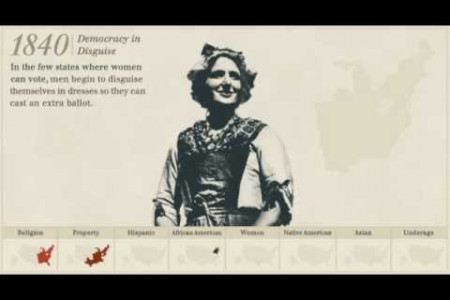
Infographic: Extraordinary Funeral Traditions From Around the World
EXTRAORDINARY funeral Traditions From Around The World Shy Burial Where Chinese provinces of Tibet, Qinghai and Inner Mongolia Style Dissection and consumption by animals Sky burial is a funerary practice that involves ritual dissection. A human corpse is cut into small pieces and placed on a mountaintop, exposing it to the elements (mahabhuta) and animals – especially predatory birds. Beliefs The function of the sky burial is simply to dispose of the remains in as generous a way as possible. The majority of Tibetans and many Mongolians adhere to Vajrayana Buddhism, which teaches the transmigration of spirits. They believed that there is no need to preserve the body, as it is now an empty vessel. Famadihana Where Madagascar Style Exhumation of bodies Famadihana is a funerary tradition of the Malagasy people in Madagascar. Known as the turning of the bones, people bring forth the bodies of their ancestors from the family crypts and rewrap them in fresh cloth, then dance with the corpses around the tomb to live music. Beliefs Famadihana is a way of the Malagasy people to remember their dead relatives and loved ones from time to time. These people dig out the remains of their dead one's body at regular intervals and wrap them in fresh clothes. They bury them again after carrying them around their villages. Tree-Bound Where Bali, India, Central Australia Style Display of bodies on trees A tree-bound funeral tradition simply involved tying the dead to the ancient trees found among the village of the deceased. This ritual is likely to be practiced by many religions and cultures, due to the widespread nature of this form of burial worldwide. Beliefs It is believed the reason for a tree-bound burial was to ensure that the dead are always in the hearts of the people and the ritual is a way of reminding others that they must prepare for death and the life thereafter Hanging ef Coffin Where Ancient China Style Suspension and display of coffins This ancient ritual practised by the old Chinese Dynasties involved the displaying of coffins on high rock cliffs.The coffins were actually discovered by the archaeologists among the remains of these ancient civilisations. BOMTT-OG Beliefs Setting of coffins meant that they still thought of their dead in highly respectable positions and their ghosts and spirits are free to roam around the hills and rocks. They believe that coffins need to be close to the sky so that their dead can be closer to heaven. Mass Scavenging Where Ancient Pacific Northwest Coast of North America Style Open mass grave and consumption by animals This ancient ritual practice by the indigenous people of the Pacific Northwest Coast of North America involved throwing all the dead people in a vicinity of town, village or city in one pit and then letting wild animals loose to feed on the dead bodies. Beliefs This tradition meant that the relatives do not need to perform any other methods like burial and cremation. Disposing of the bodies through this method lets the dead live only in one form in the hereafter and they have no belongings in the real world, not even their own bodies. Exposing Dead to Vultures Where Mumbai, India Style Preparation of body and consumption by vultures This unusual funeral tradition is being revitalised by the Parsi community of Mumbai. Mainly a ritual practised by the Zoroastrian religion, by first preparing the dead by cleansing and bathing them, and then setting them up on towers of their religious temples to vultures. Beliefs The idea behind this tradition is that the dead must get rid of their physical forms and must only survive in one being, their spiritual selves. Cannibalism Where Ancient Papua New Guinea and Brazil Style Consumption by the community One of the most unusual funeral traditions from Papua New Guinea and Brazil in which the community feasted upon the deceased's body. The deceased one's family used to gather around the dead body and used fire and other basic tools to make it edible. It is also known to be practised in nations who primarily survived in the jungles with not much to eat except herbs and plants. Beliefs Now rarely practised, this inhuman practice probably arose from malnourished nations who sought other methods to feed themselves. Cannibalism thus removed any need for disposing of any body. Sati Where Ancient India Style Cremation, death of spouse on funeral pyre Sati is a very old tradition from the religion of Hinduism. Sati was a type of punishment given to a woman whose husband has died. It is not exclusive to Hindus; some other cultures are also known to practise this tradition. The widow was forced to burn herself as a way to sacrifice herself to the mighty powers in respect of her husband's death. Beliefs The main reason of this ritual practice could be that an alone woman has no place in this world after her husband's death and she must sacrifice herself willingly before the Gods. SUFFOLK FAMIL HYDE-CHAMBERS FUNERAL SERVICE www.rhcfunerals.co.uk REFERENCES anthropology.net/2008/06/30/cross-cultural-burial-rituals/ ideas.ted.com/11-fascinating-funeral-traditions-from-around-the-globe/ userpage.fu-berlin.de/corff/im/Texte/burial.html www.mirror.co.uk/news/weird-news/top-10-weird-wonderful-burials-3203590 matadornetwork.com/bnt/10-extraordinary-burial-ceremonies-from-around-the-world/ hauntedohiobooks.com/news/sitting-dead-bizarre-burials-curious-coffins/ www.wonderslist.com/10-bizarre-funeral-traditions-world/ channel.nationalgeographic.com/taboo/episodes/bizarre-burials/ io9.com/5960343/10-bizarre-death-rituals-from-around-the-world
Infographic: Extraordinary Funeral Traditions From Around the World
Source
http://www.r...ation.htmlCategory
OtherGet a Quote











